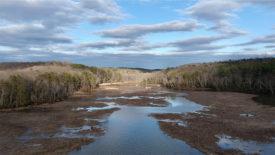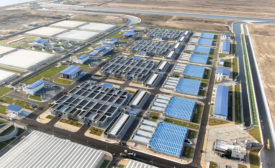Pam McFarland
Pam is ENR’s senior editor for government coverage, focusing on federal environmental and labor issues as they relate to the construction industry. She has a degree in journalism and an M.A. in writing fiction, and has worked previously as both an editor at ENR (2007-2016) and as a freelancer for a variety of publications and clients. One of her favorite gigs involved writing about stars, black holes and the mysteries of the universe for NASA.
ARTICLES
Environment
Federal task force will prioritize abandoned oil-gas wells that pose most risk to environment, public health
Read More
Renewable Power Construction
Administration Expands Push to Build Clean Energy Projects
Plans include funding more renewable projects and accelerated permit decisions
Read More
ENR 2021 Top 25 Newsmakers
Todd S. Bridges: Advocate Of Working With, Not Against, Nature in Civil Infrastructure
A tireless proponent of nature-based solutions, this Corps expert has boosted acceptance of this project approach
Read More
Environment
2021 US Climate-Related Disasters Second Only to 2020 in Cost
NOAA data underscore damaging effects of climate change on infrastructure, human lives
Read More
Environment
Chesapeake Bay Water Quality Plan Could Fail
Study suggests pollution reductions could fall short of 2025 targets
Read More
The latest news and information
#1 Source for Construction News, Data, Rankings, Analysis, and Commentary
JOIN ENR UNLIMITEDCopyright ©2025. All Rights Reserved BNP Media.
Design, CMS, Hosting & Web Development :: ePublishing










